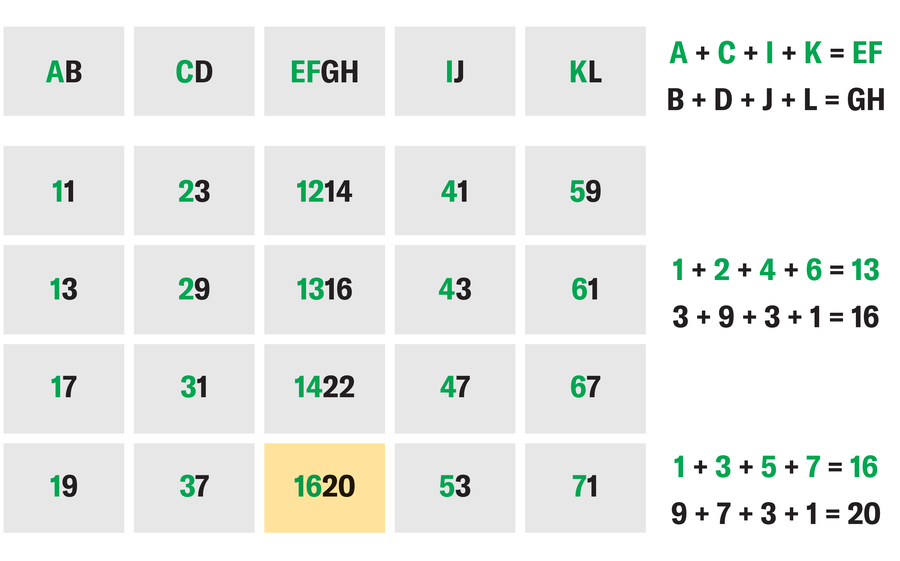
Hans-Karl Eder/Spektrum der Wissenschaft, restyled by Amanda Montañez
Which number should replace the question mark?
The missing number is 1,620.
The digits in the tens places (green in the figure below) of the numbers in columns 1, 2, 4 and 5 are added together. The total value is represented by the digits in the thousands and hundreds places of the number in column 3.
The digits in the ones places (black) in columns 1, 2, 4 and 5 are added together. The total value is represented by the digits in the tens and ones places of the number in column 3.

Hans-Karl Eder/Spektrum der Wissenschaft, restyled by Amanda Montañez
We’d love to hear from you! E-mail us at games@sciam.com to share your experience.
This puzzle originally appeared in Spektrum der Wissenschaft and was reproduced with permission.